Recent developments in photoredox-catalyzed remote ortho and para C-H bond functionalizations
- PMID: 32180843
- PMCID: PMC7059497
- DOI: 10.3762/bjoc.16.26
Recent developments in photoredox-catalyzed remote ortho and para C-H bond functionalizations
Abstract
In recent years, the research area of direct C-H bond functionalizations was growing exponentially not only due to the ubiquity of inert C-H bonds in diverse organic compounds, including bioactive natural and nonnatural products, but also due to its impact on the discovery of pharmaceutical candidates and the total synthesis of intricate natural products. On the other hand, more recently, the field of photoredox catalysis has become an indispensable and unparalleled research topic in modern synthetic organic chemistry for the constructions of challenging bonds, having the foremost scope in academia, pharmacy, and industry. Therefore, the development of green, simpler, and effective methodologies to accomplish direct C-H bond functionalization is well overdue and highly desirable to the scientific community. In this review, we mainly highlight the impact on, and the utility of, photoredox catalysts in inert ortho and para C-H bond functionalizations. Although a surge of research papers, including reviews, demonstrating C-H functionalizations have been published in this vital area of research, to our best knowledge, this is the first review that focuses on ortho and para C-H functionalizations by photoredox catalysis to provide atom- and step-economic organic transformations. We are certain that this review will act as a promoter to highlight the application of photoredox catalysts for the functionalization of inert bonds in the domain of synthetic organic chemistry.
Keywords: dual catalysis; light; ortho and para C–H bond functionalization; photoredox catalysis.
Copyright © 2020, Siddiqui and Ali; licensee Beilstein-Institut.
Figures


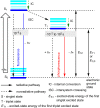

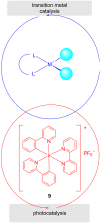




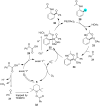





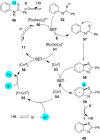






















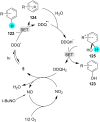





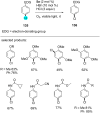



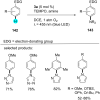

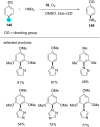



Similar articles
-
Photocatalytic regioselective C-H bond functionalizations in arenes.Chem Sci. 2024 Dec 9;16(3):1041-1070. doi: 10.1039/d4sc07491b. eCollection 2025 Jan 15. Chem Sci. 2024. PMID: 39691465 Free PMC article. Review.
-
Exploration of C-H Transformations of Aldehyde Hydrazones: Radical Strategies and Beyond.Acc Chem Res. 2018 Feb 20;51(2):484-495. doi: 10.1021/acs.accounts.7b00565. Epub 2018 Jan 23. Acc Chem Res. 2018. PMID: 29359909
-
Merging Visible Light Photoredox Catalysis with Metal Catalyzed C-H Activations: On the Role of Oxygen and Superoxide Ions as Oxidants.Acc Chem Res. 2016 Sep 20;49(9):1969-79. doi: 10.1021/acs.accounts.6b00275. Epub 2016 Aug 24. Acc Chem Res. 2016. PMID: 27556812 Free PMC article.
-
Photoredox Catalysis for Building C-C Bonds from C(sp2)-H Bonds.Chem Rev. 2018 Aug 22;118(16):7532-7585. doi: 10.1021/acs.chemrev.8b00077. Epub 2018 Jul 16. Chem Rev. 2018. PMID: 30011194
-
Photoredox catalysis in nickel-catalyzed C-H functionalization.Beilstein J Org Chem. 2021 Aug 31;17:2209-2259. doi: 10.3762/bjoc.17.143. eCollection 2021. Beilstein J Org Chem. 2021. PMID: 34621388 Free PMC article. Review.
Cited by
-
Photocatalytic regioselective C-H bond functionalizations in arenes.Chem Sci. 2024 Dec 9;16(3):1041-1070. doi: 10.1039/d4sc07491b. eCollection 2025 Jan 15. Chem Sci. 2024. PMID: 39691465 Free PMC article. Review.
-
Dithieno[3,2-b:2',3'-d]thiophene (DTT): an emerging heterocyclic building block for future organic electronic materials & functional supramolecular chemistry.RSC Adv. 2022 Dec 16;12(55):36073-36102. doi: 10.1039/d2ra05768a. eCollection 2022 Dec 12. RSC Adv. 2022. PMID: 36545080 Free PMC article. Review.
-
Photoredox-Catalyzed C-H Functionalization Reactions.Chem Rev. 2022 Jan 26;122(2):1925-2016. doi: 10.1021/acs.chemrev.1c00311. Epub 2021 Sep 29. Chem Rev. 2022. PMID: 34585909 Free PMC article. Review.
-
Recent Advances on Synthetic Methodology Merging C-H Functionalization and C-C Cleavage.Molecules. 2020 Dec 13;25(24):5900. doi: 10.3390/molecules25245900. Molecules. 2020. PMID: 33322116 Free PMC article. Review.
References
Publication types
LinkOut - more resources
Full Text Sources
